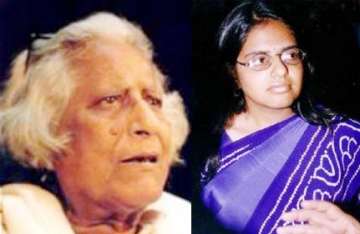New Delhi, Oct 4: As Test-tube baby pioneer Robert Edwards comes under focus for bagging the 2010 Nobel Prize for Medicine, the physician behind India's first Test-tube baby in 1978 was mired in a controversy and even hounded that led him to end his life.
The country's first successful in-vitro fertilization to produce "Durga" alias Kanupriya Agarwal--second test tube baby in the world--was performed by Dr Subhash Mukhopadhyay on October 3, 1978. The Calcutta-based doctor got belated recognition eight years later but it was tragically late.
The world's first test tube baby Louise Brown was born just three months earlier on July 25, 1978 in the UK when Edwards' efforts were crownd by success. Some four million Test-tube babies have been born worldwide since 1978.
Durga's birth was caught in ethical and moral controversies with the West Bengal government even denouncing Mukhopadhyay's claim that he had created history in India. The physician's achievements were not recognised at first.
Facing social ostracization, bureaucratic negligence, reprimand and insult from the Marxist government and refusal of the Government of India to allow him to attend international conferences, the physician committed suicide in his Calcutta residence on June 19, 1981.
The physician was subjected to repeated questioning by a committeee formed by the West Bengal government. The Commitee said the doctor's work was bogus
His feat has since been posthumously recognised. He has been given belated recognition as the Indian physician who in 1986 was "officially" regarded as being the first doctor to perform in-vitro fertilization in India.
Eight years after the birth of 'Durga', India's second Test-tube baby Harsha was born.
Indira Hinduja was the gynaecologist responsible for the birth of Harsha Chawda at the state-run hospital K.E.M. Hospital in Mumbai on August 16, 1986. Some records say that Harsha is the 'first' Test-tube baby because of the controversy involving Mukhopadhayay.
Like Brown's birth, Durga's birth had caused public debate, criticism and even social professional ostracism of those involved in initiating life outside the body.
Harsha's birth opened up the much-sought opportunity for treating couples incapable of natural reproduction. The ICMR estimates at least 10 per cent of couples in India face infertility.
Apart from factors like low sperm count, infections and erectile dysfunction in males, damaged fallopian tubes, low egg production and fibroids in females, lifestyle changes have also adversely affected fertility.
In Vitro Fertilisation (IVF) is a complex process in which the ovum is fertilised outside the body and the fertilised egg is then implanted to the uterus.
Presently, there are more than 400 IVF clinics in India that even treat those coming from abroad due to the comparatively lower costs and, in some cases, for Indian donor eggs.
Mukhopadhyaya's life and death has been the subject of countless newspaper reviews and inspired the Hindi movie 'Ek Doctor Ki Maut' (Death of a doctor), directed by Tapan Sinha. PTI
Latest India News
